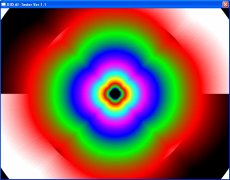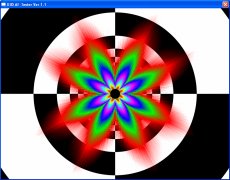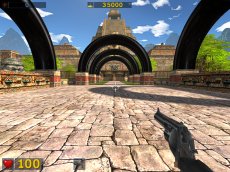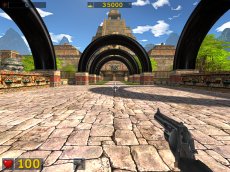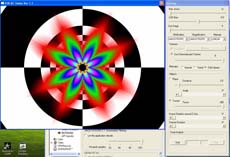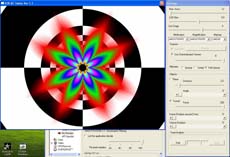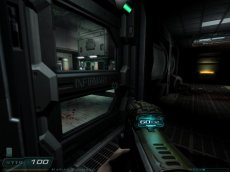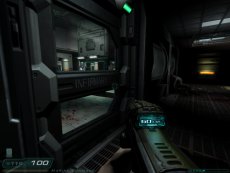Image Quality
As the X700 RV410 chip is derived from the R300/R420 line the basic image quality principals employed by the chip should largely be the same as the other chips, however we'll take a refresher of some of the main points here.
Note: The larger linked images are in PNG format, so beware of the file size if that is likely to present issues with your connection.
As we can see from the images above the basic texture filtering properties of the X700 remain the same as the rest of ATI's DirectX9 products, with the Anisotropic Filtering still having its angle dependency. Like the rest of the X line of Radeons, and 9600 based products, the X700 uses a mix of Trilinear and fast Trilinear, however this applied only when there are no large variances in the mip-maps, so the colour mip-map image is not actually representative of the type of Trilinear filtering that you will see in the vast majority of applications; the Serious Sam Image underneath is though. With drivers that contain Catalyst AI you can now achieve standard Trilinear filtering by disabling Catalyst AI, as we illustrate here, however in doing so this also disables any application optimisations or bug fixes.
Texture layer 0 | Texture layers greater than 0 |
Also new to the 8.07 (Catalyst 4.10) drivers, and presumably beyond, is the removal of the "Quality" and "Performance" Anisotropic Filtering options, and the characteristics behind them. In previous drivers, even when quality Anisotropic Filtering was selected only the first texture layer would receive Trilinear filtering, whilst subsequent layers would get just Bilinear, however with the new control panel settings each layer would get the type of filtering requested by the application, whilst still having the level of Anisotropic Filtering you selected forced upon it.
 2x AA |  4x AA |  6x AA |
The FSAA properties on X700 stay the same as the rest of ATI's DirectX9 line of boards as well - still with the sparse sampled, gamma corrected MultiSampling scheme, up to 6 samples. The sampling patterns for the basic modes haven't changed either.
 Frame 1 |  Frame 2 |  Combined |
As the X700's FSAA capabilities are basically the same as the rest of ATI's DX9 line-up it too is capable of rending in ATI's "Temporal" FSAA mode, which renders different sampling patterns on alternate frames. For the most part this hasn't changed since it was introduced at the X800 launch, however we do note that the sampling patterns for 4x TAA has altered in more recent drivers, as illustrated above.
The above image is from Doom 3 with 8x Anisotropic Filtering (AF) and 4x FSAA enabled, rendered on an X700 and X800. The X700 appears to be rendering the image identically to the X800, and even when compared with an image difference program the only parts of the image that differ are the a few small lit areas and the gun, all of which move in the frame.

